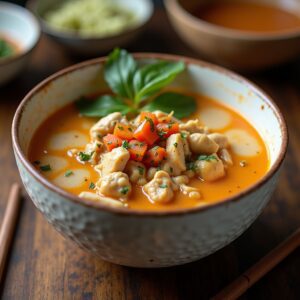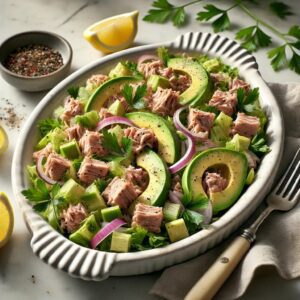

Eat Your Water: The Most Hydrating Fruits and Vegetables to Support Whole-Body Health


Arya Soleil
When we think of staying hydrated, the first thing that comes to mind is usually a glass of water. But did you know that your food can also be a major source of hydration? In fact, many fruits and vegetables are over 90% water and come with the added bonus of vitamins, minerals, antioxidants, and fiber. These hydrating foods help support everything from skin elasticity to digestion, circulation, and even energy levels.
In this blog, we’ll explore how to “eat your water” with the best hydrating fruits and vegetables, why it matters, and how to build hydration into every meal—no chugging required.
Why Food-Based Hydration Is Just as Important as Drinking Water
Your body is roughly 60% water, and every system—from your brain and muscles to your kidneys and skin—relies on it to function properly. While most people aim to drink eight cups of water a day, hydration from food often gets overlooked. But here’s the secret: up to 20–30% of your daily water intake can come from food—especially if you focus on high-water-content produce.
Hydrating foods don’t just supply water—they also come with electrolytes, fiber, and nutrients that help your body absorb and retain water more effectively than plain H2O alone.
Plus, when hydration is paired with natural sugars, amino acids, and minerals—as it is in fruits and vegetables—your body uses it more efficiently.
The Benefits of Eating Your Water
Eating water-rich fruits and veggies offers more than just thirst-quenching power. Here’s what happens when you eat your hydration:
Improved skin elasticity and glow
Better digestion and regular bowel movements
Reduced bloating and fluid retention
Enhanced energy and focus
Support for kidney function and detox pathways
Better circulation and temperature regulation
Fewer headaches and less brain fog
Now let’s explore the top hydrating foods featured in the creative—and why they deserve a daily spot on your plate.
Cucumber (98% Water)
Cucumber is the most hydrating food on this list, clocking in at a whopping 98% water content. It’s a natural diuretic, helping flush toxins while providing silica and antioxidants that support skin and connective tissue.
Cucumbers are also soothing to the digestive tract and can help cool inflammation internally.
How to enjoy:
Slice cucumbers into salads, use them in wraps, or add them to infused water for a refreshing, spa-like experience.
Celery (95% Water)
Celery is made up of structured water and natural sodium, potassium, and magnesium—making it nature’s electrolyte. It helps improve digestion, regulate blood pressure, and reduce bloating.
Celery is also rich in antioxidants and supports bile production for liver detoxification.
How to enjoy:
Snack on celery with hummus, blend into green juices, or chop into soups and stews for a hydrating crunch.
Tomatoes (94% Water)
Tomatoes are rich in lycopene, a powerful antioxidant that supports heart health and skin protection from UV damage. Their high water content makes them a juicy, satisfying way to hydrate while also delivering vitamin C, potassium, and folate.
How to enjoy:
Slice fresh tomatoes for sandwiches, salads, and bruschetta. Cherry tomatoes also make a great on-the-go snack.
Watermelon (92% Water)
Watermelon is the classic summer hydration fruit for good reason. It’s 92% water and contains citrulline, an amino acid that boosts circulation and reduces muscle soreness. It’s also rich in vitamin A, B6, and antioxidants.
Watermelon is also naturally cooling, making it perfect for hot weather or post-workout recovery.
How to enjoy:
Cube watermelon into fruit salads, blend into smoothies or slushies, or enjoy frozen watermelon popsicles.
Broccoli (91% Water)
While not typically thought of as hydrating, broccoli has surprisingly high water content along with fiber, vitamin K, and vitamin C. It also contains compounds like sulforaphane that support detoxification and cellular health.
Its combination of hydration and fiber supports satiety and digestive function.
How to enjoy:
Steam lightly, roast with olive oil, or shred raw into salads and slaws.
Grapefruit (91% Water)
Grapefruit is a citrus powerhouse loaded with water, vitamin C, and enzymes that support fat metabolism and liver health. It also helps reduce insulin spikes, making it great for blood sugar balance.
Grapefruit is especially good in the morning to kickstart digestion and hydration.
How to enjoy:
Eat plain with a sprinkle of cinnamon, juice it fresh, or segment it into green salads.
Carrots (90% Water)
Carrots are another underrated hydration hero. With 90% water content and high levels of beta-carotene (a precursor to vitamin A), they support vision, skin health, and immune function.
They also provide a satisfying crunch and help cleanse the digestive tract naturally.
How to enjoy:
Snack on raw baby carrots, roast them for a sweet caramelized treat, or shred into slaws and wraps.
How to Maximize Hydration Through Food
To truly reap the benefits of hydrating fruits and vegetables, it’s best to spread them throughout your day. Here’s how to build hydration into every meal without even thinking about it:
Start your day with water-rich foods
Try a smoothie made with cucumber, watermelon, berries, and leafy greens, or enjoy grapefruit with a handful of nuts.
Add high-water veggies to every meal
Toss cucumbers and tomatoes into your salads. Add celery and broccoli to your soups or stir-fries. Even a few slices of raw veggies with lunch can make a difference.
Snack smarter
Swap out processed snacks for carrot sticks, fruit slices, or cucumber with lemon juice and sea salt.
Infuse your water
Add slices of fruit, veggies, or herbs to your water for flavor and micronutrients. Try cucumber-mint or watermelon-basil infusions.
Blend your hydration
Soups, smoothies, and herbal teas are great ways to combine hydration with nutrition—especially for kids or those who struggle with drinking enough water.
Other Hydrating Fruits and Veggies to Include
In addition to the ones listed above, here are a few more water-rich foods to work into your rotation:
Strawberries (91%)
Zucchini (94%)
Lettuce and romaine (95–96%)
Peaches (89%)
Oranges (87%)
Pineapple (86%)
How to Tell If You’re Dehydrated
Even mild dehydration can affect how you feel, think, and perform. Signs you may not be getting enough water (from food or drink) include:
Headaches or brain fog
Dry skin or lips
Constipation
Fatigue
Dizziness
Dark yellow urine
Low mood or irritability
Adding water-rich foods to your day can help prevent dehydration naturally—especially in hot climates, during exercise, or when recovering from illness.
Hydration Tips for Kids and the Elderly
Children and older adults are especially prone to dehydration. Here’s how to help them stay hydrated through food:
Offer cucumber slices or melon cubes as snacks
Blend smoothies with coconut water, spinach, and berries
Serve soups or broths with added vegetables
Make popsicles using pureed fruit and hydrating herbs like mint or lemon balm
Final Thoughts: Hydration Is More Than What You Drink
Water is life—but you don’t have to drink it all to stay well-hydrated. Eating your water through high-water-content fruits and vegetables is a delicious, effortless way to nourish your body and support every system—from your skin and kidneys to your brain and metabolism.
When you focus on hydration through food, you’re not just drinking water—you’re absorbing it along with fiber, minerals, antioxidants, and natural electrolytes that keep your body in balance.
So the next time you think, “I should drink more water,” reach for a cucumber, a juicy slice of watermelon, or a handful of cherry tomatoes. Your body (and skin, and energy) will thank you.
Recommended Reads

- June 9, 2025
Castor Oil in the Navel: A Forgotten Practice That Supports Digestion and Sleep
Home News Healthy Habits & Lifestyle Health Conditions &...


- June 9, 2025
Turmeric for Ulcers: A Natural Way to Soothe and Protect Your Stomach
Home News Healthy Habits & Lifestyle Health Conditions &...


- June 9, 2025
The Healing Power of Castor Oil Compresses: A Natural Therapy for Detox, Sleep, and Circulation
Home News Healthy Habits & Lifestyle Health Conditions &...


- June 9, 2025
Medicinal Mushrooms: Ancient Remedies with Modern Benefits
Home News Healthy Habits & Lifestyle Health Conditions &...


- June 9, 2025
Triphala: The Ancient Herbal Blend That Supports Digestion, Detox, and Longevity
Home News Healthy Habits & Lifestyle Health Conditions &...


- June 9, 2025
Mullein: Herbal Support for Lung Health and Clear Breathing
Home News Healthy Habits & Lifestyle Health Conditions &...

Eat Your Water: The Most Hydrating Fruits and Vegetables to Support Whole-Body Health

When we think of staying hydrated, the first thing that comes to mind is usually a glass of water. But did you know that your food can also be a major source of hydration? In fact, many fruits and vegetables are over 90% water and come with the added bonus of vitamins, minerals, antioxidants, and fiber. These hydrating foods help support everything from skin elasticity to digestion, circulation, and even energy levels.
In this blog, we’ll explore how to “eat your water” with the best hydrating fruits and vegetables, why it matters, and how to build hydration into every meal—no chugging required.
Why Food-Based Hydration Is Just as Important as Drinking Water
Your body is roughly 60% water, and every system—from your brain and muscles to your kidneys and skin—relies on it to function properly. While most people aim to drink eight cups of water a day, hydration from food often gets overlooked. But here’s the secret: up to 20–30% of your daily water intake can come from food—especially if you focus on high-water-content produce.
Hydrating foods don’t just supply water—they also come with electrolytes, fiber, and nutrients that help your body absorb and retain water more effectively than plain H2O alone.
Plus, when hydration is paired with natural sugars, amino acids, and minerals—as it is in fruits and vegetables—your body uses it more efficiently.
The Benefits of Eating Your Water
Eating water-rich fruits and veggies offers more than just thirst-quenching power. Here’s what happens when you eat your hydration:
Improved skin elasticity and glow
Better digestion and regular bowel movements
Reduced bloating and fluid retention
Enhanced energy and focus
Support for kidney function and detox pathways
Better circulation and temperature regulation
Fewer headaches and less brain fog
Now let’s explore the top hydrating foods featured in the creative—and why they deserve a daily spot on your plate.
Cucumber (98% Water)
Cucumber is the most hydrating food on this list, clocking in at a whopping 98% water content. It’s a natural diuretic, helping flush toxins while providing silica and antioxidants that support skin and connective tissue.
Cucumbers are also soothing to the digestive tract and can help cool inflammation internally.
How to enjoy:
Slice cucumbers into salads, use them in wraps, or add them to infused water for a refreshing, spa-like experience.
Celery (95% Water)
Celery is made up of structured water and natural sodium, potassium, and magnesium—making it nature’s electrolyte. It helps improve digestion, regulate blood pressure, and reduce bloating.
Celery is also rich in antioxidants and supports bile production for liver detoxification.
How to enjoy:
Snack on celery with hummus, blend into green juices, or chop into soups and stews for a hydrating crunch.
Tomatoes (94% Water)
Tomatoes are rich in lycopene, a powerful antioxidant that supports heart health and skin protection from UV damage. Their high water content makes them a juicy, satisfying way to hydrate while also delivering vitamin C, potassium, and folate.
How to enjoy:
Slice fresh tomatoes for sandwiches, salads, and bruschetta. Cherry tomatoes also make a great on-the-go snack.
Watermelon (92% Water)
Watermelon is the classic summer hydration fruit for good reason. It’s 92% water and contains citrulline, an amino acid that boosts circulation and reduces muscle soreness. It’s also rich in vitamin A, B6, and antioxidants.
Watermelon is also naturally cooling, making it perfect for hot weather or post-workout recovery.
How to enjoy:
Cube watermelon into fruit salads, blend into smoothies or slushies, or enjoy frozen watermelon popsicles.
Broccoli (91% Water)
While not typically thought of as hydrating, broccoli has surprisingly high water content along with fiber, vitamin K, and vitamin C. It also contains compounds like sulforaphane that support detoxification and cellular health.
Its combination of hydration and fiber supports satiety and digestive function.
How to enjoy:
Steam lightly, roast with olive oil, or shred raw into salads and slaws.
Grapefruit (91% Water)
Grapefruit is a citrus powerhouse loaded with water, vitamin C, and enzymes that support fat metabolism and liver health. It also helps reduce insulin spikes, making it great for blood sugar balance.
Grapefruit is especially good in the morning to kickstart digestion and hydration.
How to enjoy:
Eat plain with a sprinkle of cinnamon, juice it fresh, or segment it into green salads.
Carrots (90% Water)
Carrots are another underrated hydration hero. With 90% water content and high levels of beta-carotene (a precursor to vitamin A), they support vision, skin health, and immune function.
They also provide a satisfying crunch and help cleanse the digestive tract naturally.
How to enjoy:
Snack on raw baby carrots, roast them for a sweet caramelized treat, or shred into slaws and wraps.
How to Maximize Hydration Through Food
To truly reap the benefits of hydrating fruits and vegetables, it’s best to spread them throughout your day. Here’s how to build hydration into every meal without even thinking about it:
Start your day with water-rich foods
Try a smoothie made with cucumber, watermelon, berries, and leafy greens, or enjoy grapefruit with a handful of nuts.
Add high-water veggies to every meal
Toss cucumbers and tomatoes into your salads. Add celery and broccoli to your soups or stir-fries. Even a few slices of raw veggies with lunch can make a difference.
Snack smarter
Swap out processed snacks for carrot sticks, fruit slices, or cucumber with lemon juice and sea salt.
Infuse your water
Add slices of fruit, veggies, or herbs to your water for flavor and micronutrients. Try cucumber-mint or watermelon-basil infusions.
Blend your hydration
Soups, smoothies, and herbal teas are great ways to combine hydration with nutrition—especially for kids or those who struggle with drinking enough water.
Other Hydrating Fruits and Veggies to Include
In addition to the ones listed above, here are a few more water-rich foods to work into your rotation:
Strawberries (91%)
Zucchini (94%)
Lettuce and romaine (95–96%)
Peaches (89%)
Oranges (87%)
Pineapple (86%)
How to Tell If You’re Dehydrated
Even mild dehydration can affect how you feel, think, and perform. Signs you may not be getting enough water (from food or drink) include:
Headaches or brain fog
Dry skin or lips
Constipation
Fatigue
Dizziness
Dark yellow urine
Low mood or irritability
Adding water-rich foods to your day can help prevent dehydration naturally—especially in hot climates, during exercise, or when recovering from illness.
Hydration Tips for Kids and the Elderly
Children and older adults are especially prone to dehydration. Here’s how to help them stay hydrated through food:
Offer cucumber slices or melon cubes as snacks
Blend smoothies with coconut water, spinach, and berries
Serve soups or broths with added vegetables
Make popsicles using pureed fruit and hydrating herbs like mint or lemon balm
Final Thoughts: Hydration Is More Than What You Drink
Water is life—but you don’t have to drink it all to stay well-hydrated. Eating your water through high-water-content fruits and vegetables is a delicious, effortless way to nourish your body and support every system—from your skin and kidneys to your brain and metabolism.
When you focus on hydration through food, you’re not just drinking water—you’re absorbing it along with fiber, minerals, antioxidants, and natural electrolytes that keep your body in balance.
So the next time you think, “I should drink more water,” reach for a cucumber, a juicy slice of watermelon, or a handful of cherry tomatoes. Your body (and skin, and energy) will thank you.
Recommended Reads

- June 9, 2025
Castor Oil in the Navel: A Forgotten Practice That Supports Digestion and Sleep
Home News Healthy Habits & Lifestyle Health Conditions &...


- June 9, 2025
Turmeric for Ulcers: A Natural Way to Soothe and Protect Your Stomach
Home News Healthy Habits & Lifestyle Health Conditions &...


- June 9, 2025
The Healing Power of Castor Oil Compresses: A Natural Therapy for Detox, Sleep, and Circulation
Home News Healthy Habits & Lifestyle Health Conditions &...


- June 9, 2025
Medicinal Mushrooms: Ancient Remedies with Modern Benefits
Home News Healthy Habits & Lifestyle Health Conditions &...


- June 9, 2025
Triphala: The Ancient Herbal Blend That Supports Digestion, Detox, and Longevity
Home News Healthy Habits & Lifestyle Health Conditions &...


- June 9, 2025
Mullein: Herbal Support for Lung Health and Clear Breathing
Home News Healthy Habits & Lifestyle Health Conditions &...



